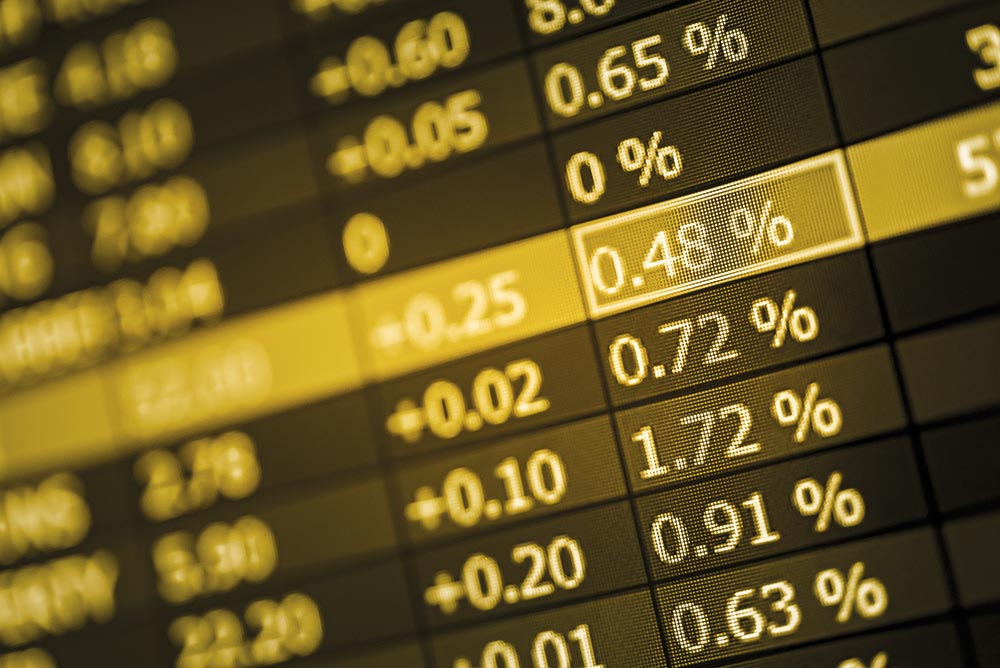Has the age of gold really returned? Since the start of 2019 the metal gold has seen an increase in its price equal to 9%, to over $1,400 per ounce, a level which it has not reached since 2013. We speak of a “safe haven”, but as has been widely shown its prices are not directly correlated to the American GDP trend, even less so to the main USA Stock Exchange index, the S&P 500.
Much greater is the correlation between the inflation and interest rate trends, the latter of which are doubly linked to the policies adopted by the main central banks. In Europe, given the handover at the helm of the CEB this 31st October from Mario Draghi to the newly-appointed Christine Lagarde (currently at the International Monetary Fund), it seems for the moment fears of a restrictive monetary policy have receded and a further cut in the cost of money borrowing is not even excluded. And in the USA the FED Governor Jerome Powell has given strong signs of cutting taxes in the near future in order to support the American economy.
In these circumstances gold, which does not pay interest rates, continues to be an interesting investment. A very recent report from Goldman Sachs, the American investment firm, has raised the gold target price from $ 1.425 to $ 1.475 per ounce in 12 months; and even if the requests for unemployment benefit in the USA were to continue to decrease, an element which according to economists indicates the final phase of an economic cycle, gold would come back to represent an anti- recessionary “shield” for investors, and less economic stagnation, and so prices may even be pushed up over the peak 2016 prices ($ 1.600 an ounce), given that the ETF investment funds could augment their presence in gold even if only for diversification.
Not only: the central banks are also increasing their investments in gold. According to the World Gold Council report (the main auriferous industrial gold mining companies’ association), in the first 2019 quarter the demand for gold from the central banks jumped up by 68% to 145.5 tons, compared with the same period in 2018. And also the ETF funds have contributed with a 49% increase to 40.3 tons. Only thanks to the central banks and the ETF funds the global demand for gold has
risen by 7% to 1,053.3 tons, given that the demand from the jewelry, electronics, and gold investment (ingots and coins) sectors has remained more or less unaltered.
For the whole of 2019 Goldman Sachs estimates central banks’ gold buying at around 750 tons, compared with 600 in 2018; that is above all for the effect of diversification and reconstruction of gold reserves by Russia (which should acquire 300 tons of gold as against 270 in 2018) and China, which in the months of April and May 2019 has started to increase gold buying to 15 tons a month compared with 10 in the previous months. It is not to be excluded that such operations have been undertaken as a precautionary measure in relation to the protectionist policy initiated by the United States.
The World Gold Council, in a report dated 11th July 2019, underlines that during periods of effectively negative interest rates, the returns offered by gold are equal to more than double than the medium or long term period. And the FED’s accommodating policy, which may cut taxes more than once before the end of the year, offers good prospects for investments in gold. Many traditional investment instruments, in particular government bonds in countries with high ratings (the United States, Australia, Canada, Denmark, Sweden, Switzerland, Japan), already show negative effective interest rates.
The recent increase from 10% to 12.5% on gold import customs duties surprisingly announced by the Indian government (the last increase happened in 2013) may reduce the overall demand for gold from India, which is the second importer worldwide after China with a 23% share. However this is metal mainly destined for the production of jewelry and not for investment. As for the Reserve Bank of India, after the USA have removed the Indian exemption on aluminum and steel import duties which it previously benefited from, it could, according to Goldman Sachs, follow the route of other central banks towards the gradual increase in gold reserves. If we cannot say that the era of gold has returned, it could instead be that the gold run has.





